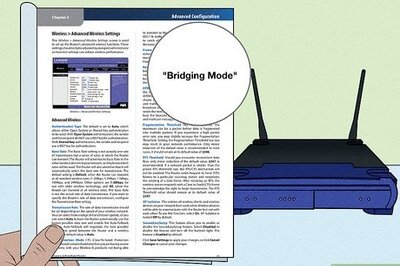
views
When the iOS 13 update rolls out on September 19, it will truly kick off a new era for the software platform. Never before has it had to do so much to keep pace with the incredibly powerful hardware that is inside the new iPhone 11, iPhone 11 Pro and the iPhone 11 Pro Max line-up.
For starters, there is the new Apple A13 Bionic chip, which is the fastest smartphone processor right now. And the way things are, that crown may well remain unchallenged for a while now. But the software can't take its easy. And therefore, iOS 13 has to match up to the faster neural engine, particularly for photo and video analysis, with the net result being that the new iPhones can do as many as 1 trillion calculations per second.
Then there is the battery life itself. Despite the extra power under the hood, the new iPhones will last between 1 to 4 hours more on a single charge, under the same usage conditions. That is because AI will decide better on how the processor fires up to deal with the application load at any given point of time, thereby saving more power.
Then there is the Deep Fusion features which will arrive on iPhones later this fall with an iOS update. Deep Fusion is a new image processing system enabled by the Neural Engine of A13 Bionic and it uses advanced machine learning to do pixel-by-pixel processing of photos, optimizing for texture, details and noise in every part of the photo. Basically, every photo that you click will take the assistant of a generous amount of artificial intelligence (AI) to make the detailing, colours and exposure look better.
Not to forget the Night Mode, which the iPhone will automatically detect and enable based on the lighting feedback that it gets. There will be advanced software working to understand the data from the 100% Focus Pixels on the new wide sensor. Next generation Amart HDR, better dynamic range calculations and analysing the data from each pixel to improve the noise reduction are highlights that will make a presence felt on almost every photo that you click.
There are significant under-the-hood changes with iOS 13. Apple says that Face ID will unlock your iPhone 30 percent faster than before—and that is when the Face ID on iPhones is faster and more accurate than most Android phones, barring a couple of welcome exceptions. The changes to the system will mean that apps will open two times faster than before, even on the older iPhones. Those stats, when we see them in action on existing iPhones, will surely make for a significant improvement in terms of the user experience. The way apps download, install and load on iOS devices is set to undergo an overhaul, with focus being on speed and keeping download as well as installation sizes smaller than ever.
Then there is the much-awaited Dark Mode. This will be system-wide, and all of Apple’s own apps will support it from the outset. Expect third party apps to also gain support for the Dark Mode by the time iOS 13 rolls out in a few days, as developers would have had enough time to enable that on their apps for iOS 13. When enabled, the dock and the notifications will also attain darker hues, simply adding to the visual experience. iOS will now support external storage devices from within the Files app.
What iOS 13 doesn’t bring with it are any extensive changes in terms of the design, layout, the usability and therefore no learning curve. No re-anchoring of home screen icons, for instance. Your iPhone with iOS 13 will work largely the same way, except that a lot of elements will now look better.
iOS 13 also brings significant updates to some of Apple’s own apps. The Photos app has been extensively redesigned, with a completely new (and potentially more intuitive) photo editing interface, improved memories sorting and extensive use of artificial intelligence to declutter the photos tab by removing screenshots, receipt photos etc. and moving them to a side. The camera mode also gets an immersive mode, instead of the thick black bar on the right side (where the shutter button is placed) allowing you to get a better idea of how the ultra-wide photos might look and helps with the composition too.




















Comments
0 comment